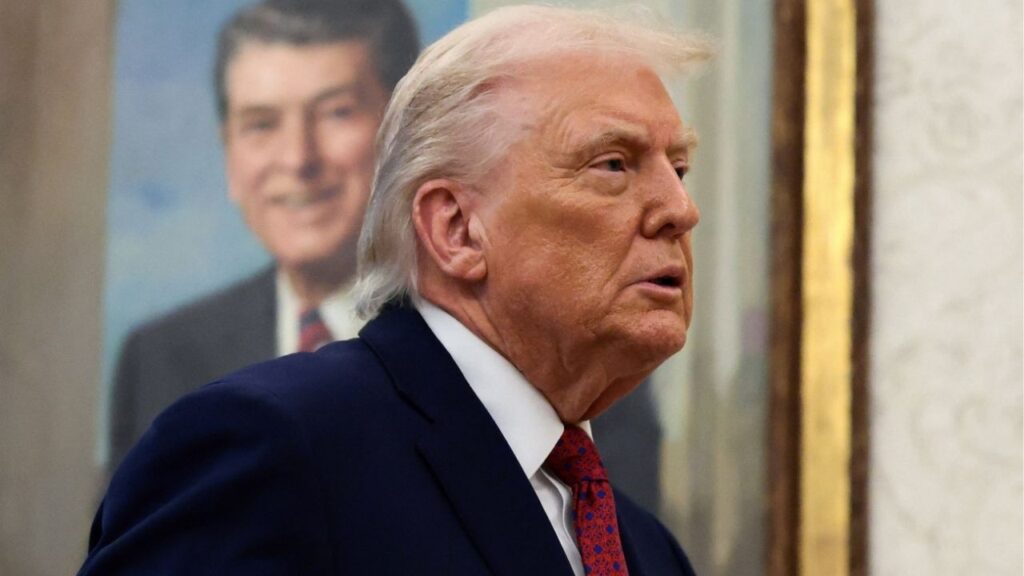Share
Then, in the wee hours of Feb. 9, both houses of Congress eventually voted to pass the budget deal – a bipartisan agreement to repeal expenditure limits and fund the government for the next two years, if everything goes to plan. However, Paul’s midnight brinkmanship cast a sour note on its passage.
Paul had a point.
Based on my experience in government and as a professor of budgeting at Harvard, I predict that this latest deal, like most short-term fixes, will cause a lot of pain down the line for younger Americans who will have to pick up the tab. Critics of the budget deal may dub it the “Kick-the-can-down-the-road Act.”
Here’s a breakdown of what the deal will and won’t do, and a brief history of how U.S. lawmakers got into this mess to begin with.
Good News, Bad news
Congress’ budget deal would raise military spending to its highest level in decades and boost most nondefense programs. To pay for this US$300 billion binge, lawmakers have decided to abandon any pretense of fiscal conservatism and borrow whatever it takes. As part of the bargain, Congress will raise the debt limit until March 2019. The agreement should keep the government open for the next two years – leaving members of Congress free to focus on the serious business of campaigning for their midterm elections.
The bad news is twofold.
First, the current deal technically only funds the government through March 23. Congress still must navigate a number of procedural hurdles such as getting the new spending figures into specific appropriations bills. For now, Democrats have called off their attempt to link rescuing the young American “Dreamers” to a budget deal. The broader immigration issue remains unresolved.
Second, the agreement does not solve any of the underlying flaws in the federal budget. For example, it provides no solution to ensure that Social Security, Medicare, military retirement trust funds and other entitlements are made sustainable. These mandatory expenditures have risen from 4 percent to 12 percent of Gross Domestic Product since 1970 and now account for two-thirds of the federal budget.
Moreover, the injection of more funds than the Pentagon even asked for will squash any attempts at spending efficiency in the military. What is certain is that the budget deficit and our national debt will sharply increase.
How Did Things Get So Bad?
The present dysfunction in the congressional budget process can be traced back to the budget reforms of 1974 when Congress passed the sweeping Congressional Budget and Impoundment Control Act. The law was the first fundamental change in national budgeting since 1921 and was driven by Congress’ effort to reassert its constitutional “power of the purse” in the aftermath of Watergate. The act strengthened the role of Congress in the budget process and established the House and Senate Budget committees to determine the size and allocation of the annual budget pie.
These committees have failed to control the budget process. In the intervening 44 years, Congress has ratified the annual budget bills on time only four times – in 1977, 1989, 1995 and 1997. The combination of rising mandatory spending on entitlements and deep tax cuts in 2001 and 2003 has led to a chronic imbalance between government revenues and expenditures.
The budget “sequester” that Congress has just lifted was adopted in 2011. It imposed across-the-board limits to federal spending in a crude attempt to deal with this ongoing budget shortfall. Congress subsequently resorted to a series of gimmicks and financial work-arounds to circumvent the spending caps, including raising billions of dollars through “tax expenditures” – amending the tax code to reduce revenues coming in to the Treasury. They also increased “user fees” for government services such as TSA airline ticket charges and shifted regulatory burdens from federal agencies to state and local governments. Meanwhile, the huge costs of the wars in Afghanistan and Iraq have been paid for outside of the regular budget using “emergency” and “exempt” funds that are entirely financed by borrowing.
One consequence of all these policies is that the public debt has climbed to more than $20 trillion, and now accounts for more than 100 percent of GDP. Racking up this debt has been made possible by historically low interest rates and a global appetite for U.S. Treasury bonds. These benign economic conditions made it easy for the Treasury to issue increasing amounts of government debt without any material impact on the cost of borrowing.
But interest rates are now beginning to climb. The latest congressional budget agreement comes hard on the heels of the recent Trump tax cuts, which will slash annual tax revenues by some $180 billion, according to the nonpartisan Congressional Budget Office.
Corrosive Effect on the Republican Party
Perhaps the most pernicious aspect of the current deal is its corrosive effect on the Republican Party. For decades, Republicans have at least aspired to stand for smaller, leaner, more efficient government. Now that they control both houses of Congress, they have rolled back spending limits and pushed through one of the most out-of-control spending packages in U.S. history. In the budget, as elsewhere in our national politics, traditional political certainties are out the window.
Linda J. Bilmes, Daniel Patrick Moynihan Senior Lecturer in Public Policy and Public Finance, Harvard University
This article was originally published on The Conversation. Read the original article.
Categories



















